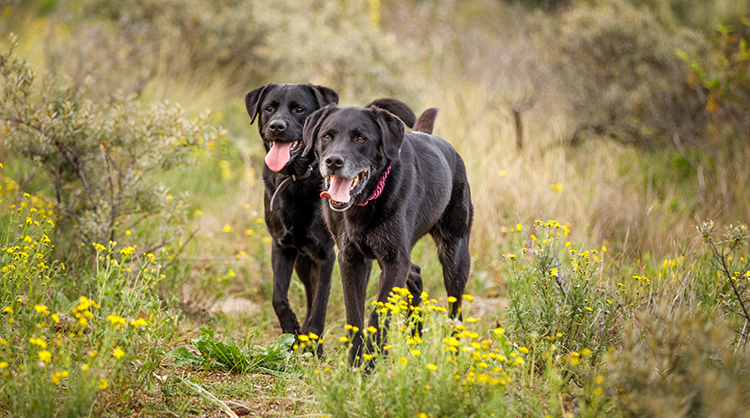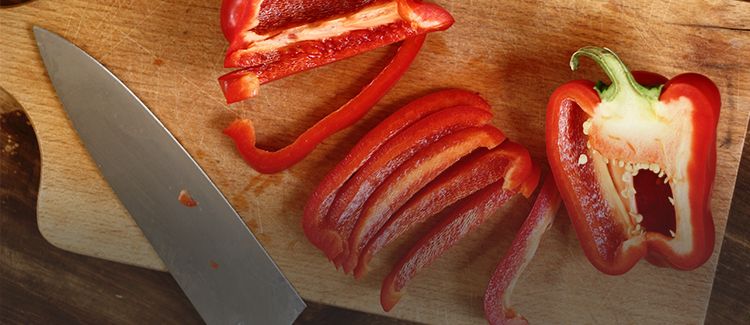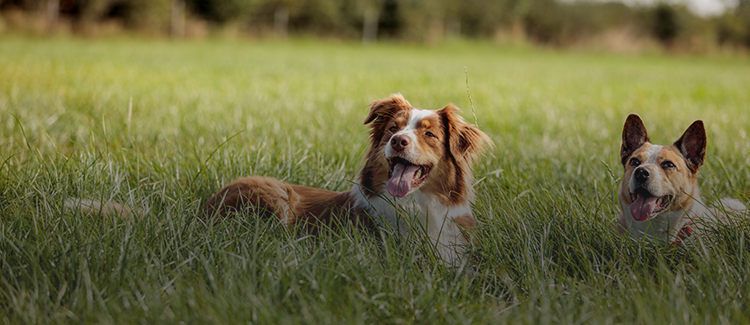How To Avoid Tick Fever This Easter
TICK AND FLEA PROTECTION

Posted by bravectosouthafrica – 01 March 2018
Topics covered in this article:
Dangers of tick and flea bites
Types of tick-borne diseases
Tapeworm in dogs
Why shouldn’t dogs eat chocolate this Easter?
What is Kennel Cough?
How are we weeks away from Easter already? Time sure does fly when you’re having the best time with your furry best friend. Speaking of having fun, Easter is always a fantastic time enjoyed with friends and family. If you’re unsure of how to include your dog into the festivities, we’ve got a range of ways they can participate with the rest of the family. Bearing that in mind, while you’re out going on Easter egg hunts, there might be something else hiding as well. Something you don’t want your dog to find: ticks and fleas – especially during this time of year. The Easter season is a time that should be enjoyed by all family members, including your dog. So best have them tick and flea free!
While your dog is hunting for treats with the rest of the family, it’s essential that they are protected against any unwelcomed guests while doing so. We know tick and flea bites may be irritating for your dog, but do you know exactly how bad it is for your dog?

How to Create a Dog-Friendly Easter Egg Hunt.
Dangers of Tick and Flea Bites
Dangers of Tick Bites
So, it happened. A tick bit your dog, and even though you hoped it wasn’t what you thought it was – it most definitely was a tick. What now? Whether it’s still enjoying its stay on your dog’s body, or you managed to remove it, there are still a lot of things you need to think about after a tick has bitten your dog. Although it might seem scary, there’s no need to completely panic. We’re here to ensure that you know which steps to take next, which symptoms to look out for and how to know when it’s time to take your pup to the vet.
Why the panic? Well, if biting your pup and sucking their blood isn’t bad enough, ticks can carry serious diseases. These types of diseases can be detrimental to your dog’s health if not looked at and taken care of the right way.
Will my dog be OK?
Ticks feed off of the blood of their hosts and prefer warmth and movement, which makes your furry friend the perfect target. If a tick has bitten your dog, don’t ignore it and hope for the best. Instead, educate yourself on the risks of ticks as well as the proper removal and prevention techniques, so you can help protect your dog against ticks and the threats they pose. Most tick-borne diseases will take several hours to transmit to their host, which means the sooner a tick is located and removed from its host, the lower the risk of disease.
What symptoms should I look out for?
The most common symptoms regarding tick-borne diseases include fever and lethargy. Some tick-borne diseases can also cause weakness, lameness, joint swelling and/or anaemia. Be careful though, because signs may take days, weeks, or months to appear – and if caught too late, could be awful news for your dog.
What are the dangers?
Ticks can transmit diseases such as Biliary (Tick Fever) or ehrlichiosis. Generally, the first thing you may notice is that your dog stops eating, has a fever and generally looks unwell. If you notice these or any other symptoms of illness in your dog, contact your veterinarian as quickly as possible so that proper testing and necessary treatments can begin.
What are the types of Tick-Borne Diseases?
Biliary in Dogs
Also known as tick fever, occurs when ticks transmit this infectious parasite into a dog’s bloodstream through a bite. Once in the bloodstream, it multiplies within the red blood cells and invades other red blood cells, causing the destruction of these cells and resulting in severe anaemia and other complications. Severe cases or cases left untreated can even result in death.
What type of ticks cause tick fever in dogs?
The yellow dog tick and the brown kennel tick are the two main types of ticks in South Africa capable of transmitting the parasite. Once the tick bites your dog, it needs to remain attached to him/her for at least 24 hours for the salivary glands of the parasite to mature and transmission via the saliva of the tick into your dog’s bloodstream to take place. If your dog is infected (not all ticks will necessarily transmit the disease they are carrying), it takes 10 to 14 days from the time of the bite for your pet to start showing symptoms of biliary.
What are the symptoms of tick fever?
The most common clinical signs of biliary include those listed below. If you notice any of these in your pet, take him/her to the vet immediately:
- Anaemia (evidenced by pale or white gums)
- Anorexia (not eating)
- Lethargy (listlessness, no energy, just lying around)
- Fever
- Jaundice (evidenced by gums turning yellow)
- Haemoglobinuria (dark or red-coloured urine)
How dangerous is tick fever?
Biliary in dogs is a potentially fatal disease, especially when it’s left untreated. Even though this is a severe disease, it’s easy to diagnose and in turn, to treat it.
Vets diagnose biliary in dogs with a simple prick of the dog’s ear to retrieve a blood sample. After that, the parasites can be seen under a microscope. It is crucial that dogs with biliary get treated quickly and correctly. If not, severe, life-threatening complications can occur. In most cases, your dog will be put on a drip and be hospitalised. If their anaemia is particularly bad, they may be given a blood transfusion.
Is there any medication that protects against tick fever in dogs?
When it comes to biliary, prevention is a lot more effective than a cure.
Bravecto® is a chewable tablet, which is given to your dog once every 12 weeks. Bravecto® is highly effective at treating and preventing ticks on your dog, as well fleas and mites. With such fast-acting, continuous and innovative protection you gain a serious defense against a tick or flea infestation on your pet and in your home. Monthly treatments can add to your stress during an infestation by requiring you to reapply the treatment every month to ensure continuous protection until the ticks and fleas are driven out. Another benefit of Bravecto® is that your dog can continue enjoying swimming or being groomed with no effect on his tick and flea protection.

Download our Bravecto® brochure.
Dangers of Flea Bites
Did you know that the seasons can influence flea infestations? That’s right; the climate influences fleas. Which is why in colder climates, fleas either die or hide out. And in warmer weather, fleas seem to have dinner parties every night. Fleas find heat on your pet and also tend to find safety and warmth in your clothing.
So, how dangerous can a small flea bite be? It’s just a tiny-red-irritating-itch, right? Unfortunately, that’s not the whole truth. Yes, flea bites are incredibly annoying for your dog, and they would be much better off without them. But, exactly how dangerous are they for your pup?
Tapeworm in dogs
In extreme cases, flea bites can cause a tapeworm infection in your dog and the rest of your family. Tapeworms are parasites that are passed onto your pet when they ingest the flea. Initially, the tapeworm is inside the flea, and when swallowed by your dog, the tapeworm grows inside him. Tapeworms are segmented parasites that can start as small 1,3 centimetres and look like maggots but can also grow to be as long as 30 centimetres. When the infected eggs are released into the environment, they have to be swallowed by immature flea larvae in the environment. Once inside the larval flea, the tapeworm egg continues to develop as the flea matures into an adult. During grooming or in response to a flea bite, a dog can ingest the tapeworm infected flea and complete the life cycle.
Symptoms of a Tapeworm in your dog
The majority of dogs with tapeworms show no signs of illness or infection. The only signs pet owners should look out for is what looks like grains of white rice stuck to or crawling through the fur around their dog’s rear end. Tapeworms can cause an itchy rear end as well as weight loss in your pup. If you’ve noticed this in your dog, it’s best to visit your veterinarian and from there on out it should be easily treated. Occasionally dogs will drag their bottoms on the ground, a behaviour known as scooting, to alleviate this irritation. *Note that scooting can also occur for other reasons such as impacted anal sacs.
Dangers of Tapeworm in dogs:
In puppies, heavy tapeworm infestations can be more dangerous. If infected, puppies can suffer a lack of growth, anaemia or intestinal blockages. Occasionally the head of the tapeworm, or scolex, detaches from the intestinal wall; the entire adult tapeworm will then be passed in the faeces or rarely vomited out. Tapeworms can be treated with deworming products like Quantel and Exitel Plus.
Can I get tapeworms from my dog?
Luckily, tapeworms cannot be transferred from dogs to humans. To become infected, a person must swallow an infected flea to become infected. However, hands contaminated with infected faecal material and poor hygiene can lead to inadvertent swallowing of gravid tapeworm segments known as proglottids.
Flea Bite Anaemia.
Flea Bite Anaemia is when small animals (like your little puppy), have a severe flea infestation. When this is the case, the fleas can feed so much that the red blood cell count of your little fluff decreases – making them anaemic. This can be a medical emergency and even fatal in some cases if left untreated.
How is flea bite anaemia treated?
In cases of anaemia resulting from either acute or chronic loss or destruction of a large amount of red blood cells, a blood transfusion may be recommended (or required) for survival. Luckily, prompt treatment by a veterinarian will most likely reverse the effects. Severe anaemia results in a significantly reduced ability of the blood to deliver oxygen throughout the body and, most importantly, to vital organs such as the brain. Therefore, a blood transfusion is necessary to help deliver oxygen and nutrients to major organs and other parts of the body.
Flea Allergic Dermatitis:
Flea Allergic Dermatitis is the itching due to fleas and the result of an immune response by the animal. Some animals are more sensitive than others, thus flea bites can lead to severe itching, irritation or major secondary skin infections in some pets. Not all dogs are allergic to fleas. Some dogs will ignore the fleas that are on them and you may not even notice there is a flea problem in your home. However, these dogs can still get tapeworms and even anaemia. It’s important to check your dog for fleas periodically and give flea prevention to your dog regularly.
A safe Easter awaits!
While we’re on the topic of prevention being better than cure, ticks and fleas aren’t the only things you need to look out for this Easter season. Chocolates and Kennel Cough are both around and willing to give our usual culprits, ticks and fleas, a run for their money. When you think of Easter, the first thing that comes to mind is probably chocolate, right? While chocolate is the highlight for many of us, it’s the one thing your dog should avoid this Easter season (and every other day of the year).

Fun activities for you and your dog this Easter.
What’s the deal with dogs and chocolates?
Although chocolate might be one of your favourite things to snack on, it’s extremely poisonous to dogs when ingested. Theobromine is the toxic element found in chocolate that is harmful to dogs. Humans can easily metabolise this component, yet dogs, on the other hand, digest it much slower. Because of their slow metabolism, it builds up toxicity levels in your dog’s system.
The effect it will have on your dog, however, depends on what type of chocolate as well as the amount of chocolate consumed by your pup. The severity of the side effects may vary, but you shouldn’t take any chances, as cocoa products can potentially kill your dog. Any dog owner is well aware that most dogs beg for handouts (and those sad puppy dog eyes are hard to resist) but, when it comes to chocolate, however, it’s one thing you should avoid sharing with your dog.
Severe hyperactivity usually marks the beginning of theobromine poisoning. Minor symptoms after dogs ingest chocolate can include vomiting and an upset stomach. However, more severe symptoms can include muscle tremors, seizures, irregular heartbeats, internal bleeding and sometimes heart attacks. Treatment for theobromine poisoning involves inducing vomiting within the first two hours of ingestion. To ensure your dog’s safety, it’s best to contact your veterinarian immediately.
Did you know that different chocolate types have different theobromine levels?
That’s right, cocoa, cooking chocolate and dark chocolate contain the highest levels of theobromine and are a lot more dangerous for your dog. Milk and white chocolate will have lower levels. If you’re dealing with any quantity of dark or bitter chocolate, err on the side of caution. The high level of theobromine in dark chocolate means it takes only a very small amount to poison a dog. Less than 28 grams of dark chocolate may be enough to poison a 20kilogram dog.
Accidents happen, and sometimes a sneaky amount of chocolate (or a lot more) happens to fall into your dog’s mouth. But, what now? Depending on the size of your dog and the amount of chocolate digested, your dog may vomit on its own. It’s important to note that once your dog vomits, not to give them any food or water.
If you have a sneaky hunch that your dog might have ingested chocolate, it is best to contact your vet right away before you wait for symptoms to show up as symptoms may take up to 12 hours to appear.
Symptoms may include:
- Extreme thirst
- Diarrhoea
- Hyperactivity
- Pacing
- Panting
- Shaking
- Seizures
The stimulants in chocolate stay in the body for a long time. In severe cases, symptoms can last up to 72 hours. Early treatment will help your dog recover quicker and lower your costs in the long run.

Alternative treats to give your dog this Easter.
Are there any treatments when your dog eats chocolate?
Should your dog eat any chocolate, there isn’t much you can do except take him to the vet. What will be helpful, however, is if you assist your vet in telling him how much chocolate your dog ate, what type it was and when your dog ate it. It can also be useful to keep the wrapper of the chocolate your dog ate to show your vet. This will help your vet decide whether your dog has eaten a toxic dose and what treatment to use. There is no antidote to theobromine. In most cases, your vet will make your dog vomit. They may wash out the stomach and feed activated charcoal which will absorb any theobromine left in the intestine. After that, your dog will be back to normal and ready for some cuddles!
Make sure love is the only thing that spreads these Easter holidays!
Are you and your family going away this Easter holiday? Whether you’ve opted for doggy day-care, or you’re taking your pup with you on the adventure, Kennel Cough is a real infection your dog could pick up when exposed to many other dogs.

How to find the right
doggy day-care.
What is Kennel Cough?
Kennel Cough, also known as ‘canine infectious tracheobronchitis’ is a highly contagious respiratory disease. Kennel Cough is contracted from places with a large number of dogs at one place (boarding and day-care facilities, dog parks, training groups, dog shows and living in a large residential complex.) Kennel Cough is extremely contagious and can spread from dog to dog through airborne particles, contaminated surfaces and direct contact. Kennel Cough can also be transmitted via touching noses of other dogs or sharing water/food bowls. Luckily, Kennel Cough is highly treatable in most dogs but unfortunately can be more severe in puppies younger than six months.
Symptoms of Kennel Cough include:
- A strong non-productive cough, often with a “honking” sound
- A runny nose
- Sneezing
- Lethargy
- Loss of appetite
- Low fever
Although Kennel Cough is easily treatable in healthy dogs, it’s important to report a coughing symptom to your veterinarian because it could be a sign of a more serious disease.
How Is Kennel Cough Treated?
In the milder cases of Kennel Cough, veterinarians prescribe a week or two of rest for your furry friend. They may also prescribe antibiotics to your pup to prevent any secondary infections. To ease the symptoms, your vet may also prescribe some cough medicine. It’s essential to use a harness on your dog, instead of a collar if your dog has Kennel Cough. The irritation of the collar on their trachea can aggravate a cough and can cause more damage to your dog’s trachea.
If you have a household with multiple pets, it may be useful to separate them as much as possible or at least to separate their water and food bowls to prevent the sick dog from infecting the other animals.
Can Kennel Cough Be Prevented?
A vaccine is available for the Bordetella bacterium, which is the most common agent to cause Kennel Cough. Dogs who are frequently boarded, visit doggie day-care, compete in canine sports, or are otherwise exposed to large groups of dogs may benefit from the vaccine, and many training, boarding, and day-care facilities require proof of vaccination.
An intranasal vaccine, Nobivac® KC, is available which is easy and painless to administer to your pup. Just a drop in his or her nose. Nobivac® KC only needs to be given yearly at your dog’s annual vaccination or veterinary check-up and it does not require a booster vaccine when you vaccinate your dog for the first time.
Although Bordetella causes most cases of Kennel Cough, some are caused by other agents, including canine adenovirus type 2, canine parainfluenza virus, canine respiratory coronavirus, and mycoplasmas. Therefore, it is important to make sure your dog is up to date on all his/her vaccinations. Your vet can give you more information on a vaccination schedule suitable to your area and your dog’s lifestyle.
If you notice your pet coughing or if you plan to introduce your dog to large groups of animals, speak with your veterinarian.
As we’ve seen in this article, tick and flea bites aren’t as innocent as they may seem. If your pup has been showing any strange signs that are out of the norm, it’s important for you to visit the vet before any infections escalate. Prevention is better than cure, so if you’re taking your dog to a doggy daycare over the long weekend, or if they’re joining you on holiday, be smart and give him a single Bravecto® treatment that will last up to 12 weeks!
Nobivac® KC Reg. No. G2604 (Act 36/1947)
GMAPP number ZA/BRV/0218/0007
Sources:
Tick Bites: Symptoms and Treatments
Tick Bites on Dogs
Anaplasmosis and Ehrlichiosis in Dogs, Cats and People
What to Do if Your Dog Eats Chocolate
Fleas on Dogs and Their Life Cycle
How Dangerous Are Fleas?
BILIARY IN DOGS: UNDERSTANDING TICKBITE FEVER & SYMPTOMS OF BILIARY
Kennel Cough in Dogs – Symptoms, Treatment & Prevention
Why Chocolate Can Be Poisonous for Your Dog
Tapeworm Infection in Dogs
Subscribe to our Newsletter
Get to know your furry friend better! Sign up for all things dog- or cat-related.
The Hairy Facts about the dreaded hairball
12 April 2021
Help! My dog’s barking mad! Volume 2
12 April 2021
Your Itchy, Scratchy Cat – All About Cat Skin Problems
12 April 2021
The Dog’s Diet: A Bone of contention?
01 April 2021
Mango Fly Worms: How to Spot and Eliminate them
Posted on November 28,2019
Managing Mange And Mites In Your Dog
Posted on June 11,2018
Why Do Cats Purr and How? Learn What Your Cat Is Saying
Posted on October 14,2020
How to Get Rid of Ear Mites in Dogs
Posted on November 06,2019









